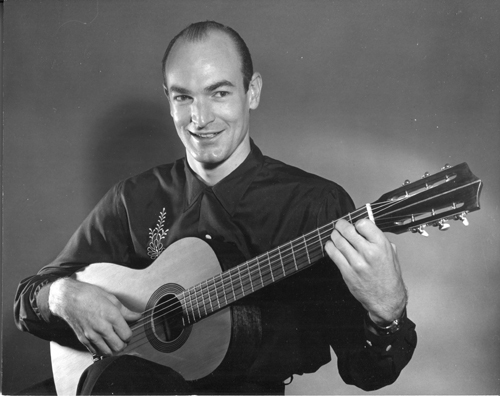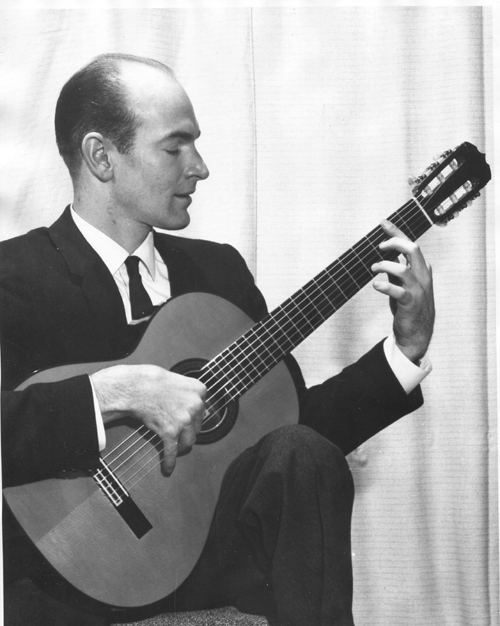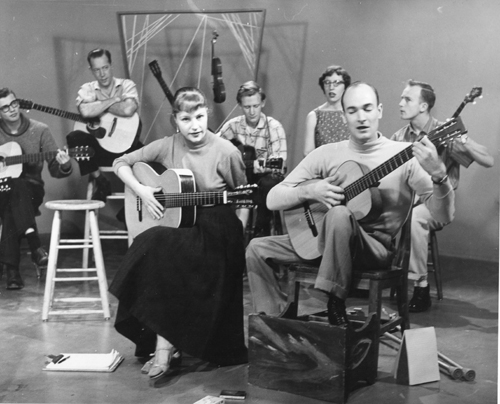
SEATTLE FOLKSINGERS
THOSE WHO LED THE WAYDON FIRTH
By Bob Nelson
In these articles titled “Those Who Led The Way,” I want to bring to you the stories of five folksingers who were very influential in the Seattle folk music scene of the 1950’s and 60’s. The first article presented Walt Robertson and now I present Don Firth as I know and love him.
I first met Don at a crafts show held on the U.W. campus in November of 1953. This fortunate meeting happened because Walt Robertson, who had a weekly television show on KING TV, had made an open invitation for his viewers to come down and enjoy a live concert. He was also spearheading the founding of what was to become The Pacific Northwest Folklore Society.
When I arrived at the show, I found this very large building that was crowded with many people and display booths. After some searching, I found a booth labeled The Pacific Northwest Folklore Society and sure enough, there was Walt Robertson shaking hands and working the crowd. Seated behind a table I also noticed a strikingly handsome man who turned out to be Don Firth. Little did I know then that we were to become lifelong friends

His early awakening to the world of folk music came from listening to a Burl Ives radio broadcast in the late 1940’s. He often says that he learned more about American history by listening to Burl Ives sing the Erie canal than he ever during his school days.
Then along came his fateful first meeting with Walt Roberson, who was performing to a small audience at “The Chalet” in the “U” district in Seattle. From that first exposure to the power of live performing, Don began a serious study of voice, guitar and folk music. He took formal voice lessons from the best available teachers, studied classical guitar, and began to submerge himself in the books and records available of traditional folk music. He also began a serious study of classical and Flamenco guitar. Here is a sample he played at a Seattle hoot in 1957 …
This was at a time when the weekly “hoots” were catching on in many living rooms in the Seattle area. By the mid 1950’s, a hoot could be found almost every weekend. These legendary events soon became a way of life for many of us as a place to listen to, and learn from, the best performers, as well as a place to hone our own performing skills. Don was a very familiar sight as he carried his guitar up and down the avenue and various haunts of the “U” district in Seattle, going from one hoot to yet another gig.
Here is a fine example of Don’s masterful song presentation, Notice how he introduces “The Ballad of Giddings Fall.”
It was about this time that Don met Richard Dyer-Bennet when he performed a concert in Bellingham. That experience was a lesson to Don about the necessity and value of deep research of the ballads he was performing. He began a lifetime study of folksongs by taking classes from Dr. David Fowler, U.W. as well as studying voice with some of the best teachers in the Seattle area.
He also continued his classical and Flamenco guitar studies and became active in the Seattle Classical Guitar Society. As a classical guitarist he insisted on keeping his instruments at concert pitch. He was the first musician most of us knew that owned a tuning fork, let alone knowing how to use it. The standard joke at local hoots went like this: “Don’t bother tuning up until Don gets here. We’ll all just have to re-tune anyway!”
In January of 1959, Don and friend Patti McLaughlin were approached by the Seattle Public Library to perform on a series of shows of folkmusic. This resulted in the six shows broadcast by KCTS TV titled “Ballads and Books.”

Patti McLaughlin and Don Firth - KCTS “Ballads and Books”
Don’s classical guitar playing was featured in the opening and closing of each show...
While the series included several prominent singers and guests, such as Ivar Haglund and James Stevens, the show held true to its library roots by promoting the literary side of folk music roots.
Don Firth “Wandering Angus”
Later that same year, Don and I took our guitars and traveled to the San Francisco Bay area looking for fame and fortune. We performed in clubs, bars, speakeasies, strip joints and various concert venues. Fortune eluded us, but our adventures, and misadventures, became the stuff of legend. We were often invited to parties and gatherings that included many of the best of the touring folk musicians of the day. As Don often said, how can you NOT learn things when you’re swapping songs with the likes of Rolf Cohn and Bob Gibson.
It was in 1962 that Seattle made its mark on the world with the Seattle World’s Fair. One of the more memorable events from the fair was the weekly public concerts that were held at the United Nations exhibit. Every Sunday, for the six month run of the fair, many of the best of the Seattle Folksingers would gather at the pavilion and sing to crowds of fairgoers. Here is Don singing at the World’s Fair...
Don FIrth singing "The Swapping Song"
Over the years Don’s trained voice led to radio work as an announcer and program host with KING F.M. the premier classical music station of the day. From there he went on to many years employment with “Ma Bell.”
He was also an early supporter of the Seattle Song circles, back in the days before the dreaded “blue book” was allowed to dominate the music. Here is a fun example of Don leading a group song in the early 1970’s
Don Firth leading "Clear Away In The Morning"
This is followed by Frances James Child’s ballad #10, “BINNORIE”
To this day, Don Firth remains the finest example I have ever known of tenacity and perfection.
Bob Nelson